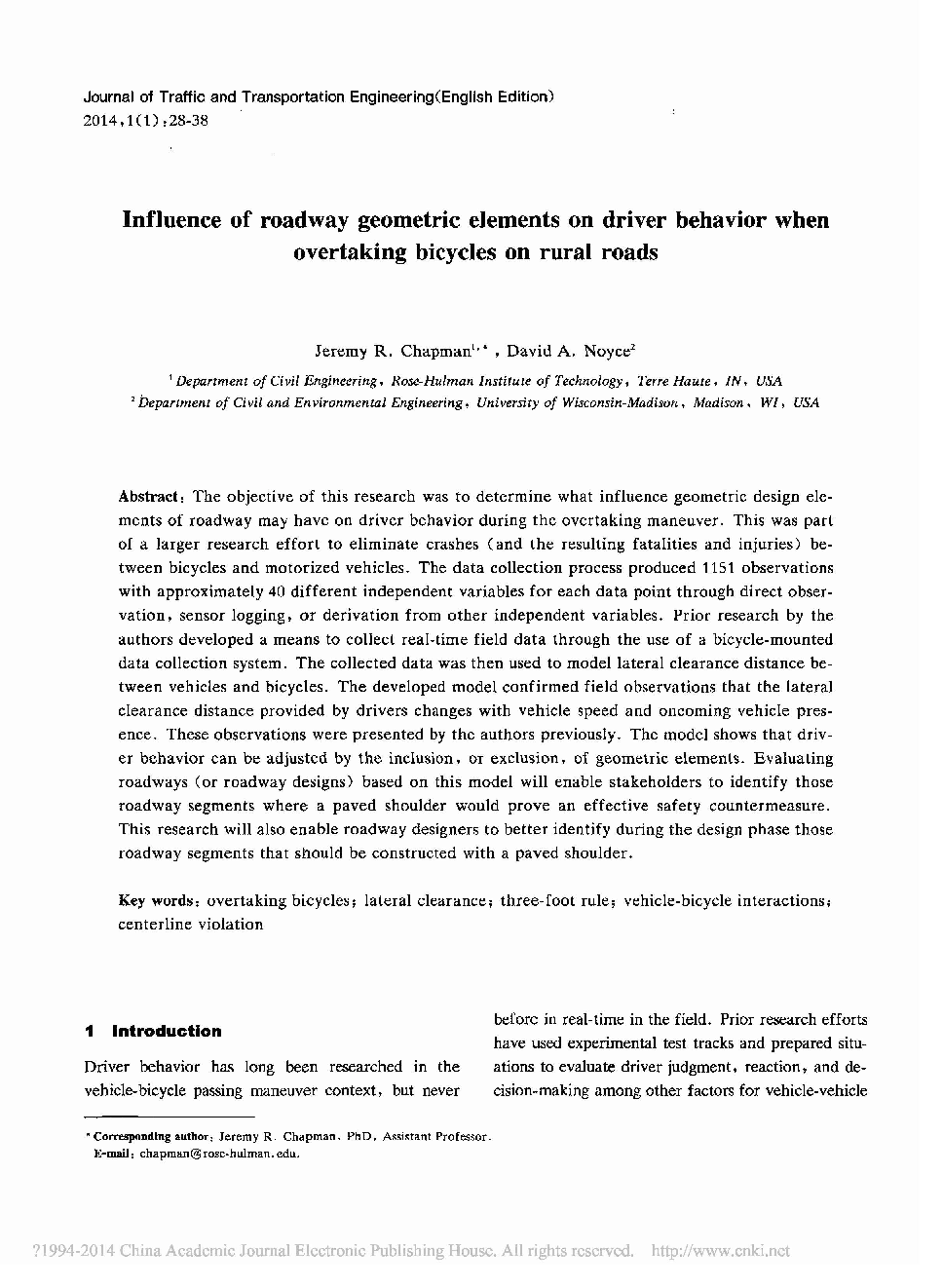| Article ID | Journal | Published Year | Pages | File Type |
|---|---|---|---|---|
| 292797 | Journal of Traffic and Transportation Engineering (English Edition) | 2014 | 11 Pages |
:The objective of this research was to determine what influence geometric design elements of roadway may have on driver behavior during the overtaking maneuver. This was part of a larger research effort to eliminate crashes (and the resulting fatalities and injuries) between bicycles and motorized vehicles. The data collection process produced 1151 observations with approximately 40 different independent variables for each data point through direct observation, sensor logging, or derivation from other independent variables. Prior research by the authors developed a means to collect real-time field data through the use of a bicycle-mounted data collection system. The collected data was then used to model lateral clearance distance between vehicles and bicycles. The developed model confirmed field observations that the lateral clearance distance provided by drivers changes with vehicle speed and oncoming vehicle presence. These observations were presented by the authors previously. The model shows that driver behavior can be adjusted by the inclusion, or exclusion, of geometric elements. Evaluating roadways (or roadway designs) based on this model will enable stakeholders to identify those roadway segments where a paved shoulder would prove an effective safety countermeasure. This research will also enable roadway designers to better identify during the design phase those roadway segments that should be constructed with a paved shoulder.
